#Wayne fella Morrison
Text
Wayne Fella Morrison was a 29-year-old Wiradjuri, Kokatha and Wirangu Aboriginal man who died in police custody while on remand in 2016. Wayne died from asphyxiation resulting from being made to wear a spithood. The exact circumstances of his death are still not known and his family, particularly his sister Latoya Aroha Rule, have been campaigning for justice for Fella non-stop.
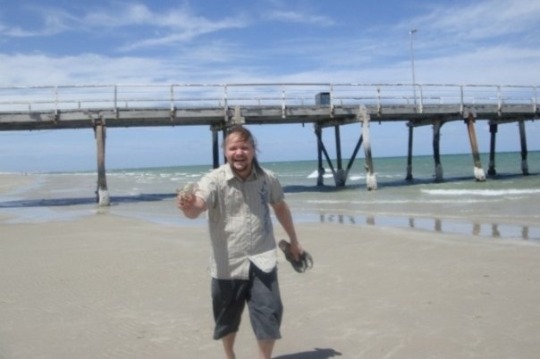
Multiple South Australian prison officers restrained Wayne; cuffing him by his wrists and ankles, hooding him with a spithood, and carrying him face down to the floor of a prison van. There were 7 officers inside the van, and no CCTV inside. Wayne was pulled out “blue and unresponsive” roughly 3 minutes later.
Fella’s family want to see a total ban on spithoods implemented immediately across Australia.
Please, if you can, please donate or share this campaign.
#justiceforfella#justice for fella#police brutality#blak australia#auspol#deaths in custody#Wayne fella Morrison#signal boost#indigenous rights#Australia#ban spithoods#death tw#violence tw#racism#rciadic#aboriginal#human rights#activism#First Nations
3 notes
·
View notes
Text
scandalous star: john wayne - an analysis
“Each of us is a mixture of some good and some not so good qualities. In considering one’s fellow man it’s important to remember the good things … We should refrain from making judgments just because a fella happens to be a dirty, rotten SOB.” - John Wayne
One of my father’s childhood heroes, John Wayne was an iconic actor who established himself as the greatest figure of western movies. He became a symbol of his country at mid-century, a cultural icon and quintessential American male against whom other screen heroes are still compared. He starred in over 169 movies, primarily westerns, and in public conveyed a larger-than-life all-American hero to the masses. Yet Wayne lived a lie. Behind closed doors, he was a restless, melancholy, troubled actor struggling to live up to the screen persona he had created. For all his patriotism, he never served a day in the military. Haunted by three failed marriages and bad relations with his children, he always struggled to win the respect he believed he deserved and felt forced to hide his sensitivity and artistic leanings. For 25 years until 1974 he was one of the world’s top box-office stars, yet he worked almost until his death not because of a love of acting, but because bad business deals and betrayals by friends meant that he never felt financially secure. Also, his sexual attractions and avoidance of intimacy (Gemini sun) as well as his masochistic attraction to sadistic, volatile and abusive personalities (Scorpio moon) made him a rather tormented individual. Playing John Wayne was the actor’s greatest role; it was also one he struggled with for a lifetime and never felt he mastered.
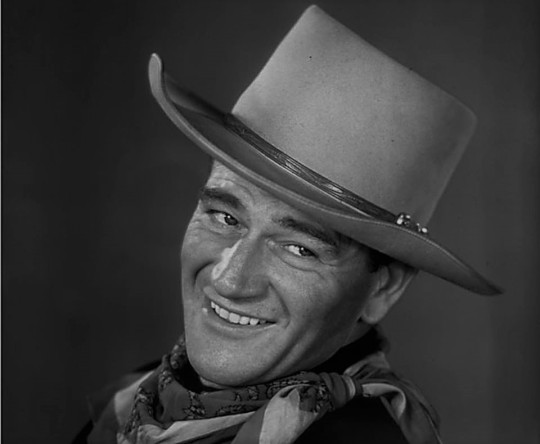
John Wayne, according to astrotheme, was a Gemini sun and Scorpio moon. Born Marion Robert Morrison in Winterset, Iowa, in 1907, he was raised in poverty in California by his parents Molly, an icily volatile and difficult mother, and Clyde, an easygoing and feckless father who couldn’t provide a decent living. Early in his life, Marion preferred to be known as Duke, a nickname he took from one of his dogs. His mother and father ended up divorcing. Wayne was very popular in school, and he went to USC on a football scholarship, where he hurt himself and dropped out. He wound up drifting into movies first as a goose-herder, later as an all-around laborer, prop man, extra and bit player, mostly in pictures directed by John Ford. The director first noticed him in 1928, but concluded that Morrison wasn’t ready for films, citing his innocence as a factor. It was Raoul Walsh who finally cast him in his first lead role, in The Big Trail, released in 1930, and who told him, after consulting with the studio bosses, to change his name to John Wayne. The film bombed and this sent Wayne back to Hollywood purgatory. He made dozens of Westerns for the so-called Poverty Row studios, disposable Saturday-matinee “oaters” for boys. (That Wayne endured making them for nearly a decade somewhat belies his claim of having no ambitions as an actor.) When Ford spotted him again, he was fishing off a pier in Long Beach, a B-level player whose confidence was shot. Perhaps Ford saw himself in Wayne; Ford was highly intelligent, erudite, sensitive and sentimental, but to protect himself in the cutthroat atmosphere of Hollywood he cultivated the image of a tough, two-fisted, hard-drinking sonofabitch. There was an awful pathos to their relationship—Wayne patterning himself on Ford, at the same time that Ford was turning Wayne into a paragon no man could live up to.
One day in 1938, Ford—an Academy Award–winning director now—tossed his hanger-on Wayne a script and, calling him an “idiot,” offered him the lead in Stagecoach. In the final tally, they made 23 pictures together. Three of them—Stagecoach (1939), The Searchers (1956), and The Man Who Shot Liberty Valance (1962)—are, by any standard, among the best and most important Hollywood films ever made. In their creative partnership, the two men succeeded in defining an ideal of American masculinity that dominated for nearly half a century. After achieving stardom, he never departed from his preference to stay on the set, interacting as part of the crew. He had seven children (4 by his first wife and 3 by his last wife) and married thrice to Hispanic women: his first wife was Josephine Saenz, who was the daughter of a Panamanian consul in Los Angeles. While still married to Saenz, he met his second wife, Esperanza Baur Diaz, nicknamed “Chata”, in Mexico while vacationing there. A year after Wayne’s and Saenz’s divorce, he marries Chata. By most accounts, Chata was wild and fiercely jealous of his co-stars, which quickly ended the marriage. He met his third wife, Pilar Wildy (born Palette) in Lima, Peru, in 1953, while he was scouting locations for The Alamo. After his marriage to Pilar dissolved in 1973, Wayne became romantically involved and lived with his former secretary Pat Stacy until his death The fact that all three of his wives were Latinas surprised Hollywood; this was the only “non-American” aspect in his life. Also, during his marriages, he had an affair with Merle Oberon as well as a 20-year on-and-off affair with Marlene Dietrich, whom he claimed “was the best sex he’d ever had”.
Unlike his father, Wayne fulfilled his mother’s dreams of success, and she never forgave him for it. She refused to acknowledge his accomplishments or praise his achievements, rejecting his attempts to demonstrate his love. All his life he was attracted sexually to women but avoided emotional intimacy. He was always somewhat afraid of them, of their inability to hide their feelings, and of their need to talk about their pain. Even before he became John Wayne, the people closest to him were men, not women, and they were friends, not family. He preferred the company of men who accepted loyalty as a cardinal virtue, guarded their innermost feelings carefully, and kept their word. Nonetheless, regardless of whether his irrelevant-ass jealous mother liked him, loads of people did and they praised Wayne for his generosity (which got him taken advantage of by former business partners and friends), tolerance and ability to work with all types of people. He was reactionary but always fair-minded towards people in person. In the last decades of his career, Wayne became something of an American folk figure, hero to some, villain to others, for his antiquated, outspoken views. When he visited Harvard University in 1974 and a “question”/statement was hollered about Wayne’s politics and “how he looks at himself,” Wayne smiled and, without reciprocal rancor – said,
“I look at myself as little as possible.”
Gotta love that Gemini wit! And true grit. Instead of ignoring barbs mortared from the audience in the form of rude, passive-aggressive, “rhetorical” questions, he answered them, stayed cool, and came out unanimously respected by them, many of them even liking him in the end. See, John Wayne never lost his sense of humour over politics — a lesson we should all take to heart today, liberal and conservative alike. Instead of wallowing in the sharp political divisiveness we love to indulge in and bitch about today, he settled these divides with good humour and in the end, thunderous applause. Wayne died of stomach cancer in 1979. To say someone was “of his time” doesn’t necessarily acquit him of wrong attitudes, but no one among us would want to be judged solely on one’s cranky senior comments. So when buzz of an old interview he did with Playboy magazine was circulating a couple months back, I wondered then, as I still occasionally do now, whether a 48-year-old interview with an actor who had been dead for almost four decades was fair game for discussion. But hey. In this search-and-destroy culture fueled by social media, boredom, and continual self-righteous self-indulgent outrage about one thing or another, the dead and the old are twice as guilty and villainous as the young and living are, I suppose. Sign of the times.
Next week, I’ll focus on the co-star in one of his films; a rather sad tale of a young lady who was forced into a business that she couldn’t handle which wound up taking her out: Virgo Gail Russell.
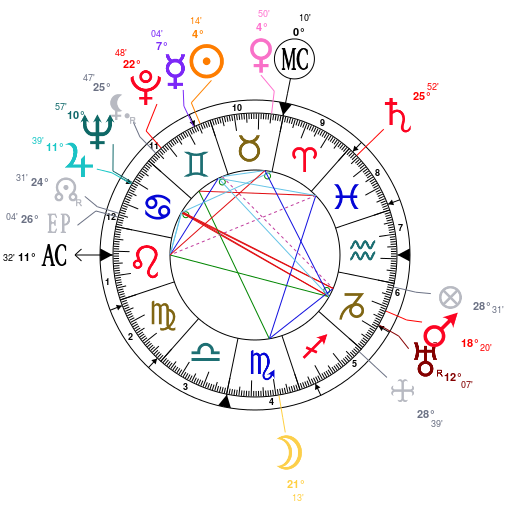
Stats
birthdate: May 26, 1907
major planets:
Sun: Gemini
Moon: Scorpio
Rising: Leo
Mercury: Gemini
Venus: Taurus
Mars: Capricorn
Midheaven: Taurus
Jupiter: Cancer
Saturn: Pisces
Uranus: Capricorn
Neptune: Cancer
Pluto: Gemini
Overall personality snapshot: His life seemed to be a breeze until he started noticing the monsters from the deep coming up for air. Then life began to seem more like an expedition across hostile territory than a jaunt to visit friends. He was a provocative and paradoxical individual who could be determinedly trivial and passionately eloquent. There was a mixture of intensity and dexterity about the way in which he moved, talked and communicated that had everyone guessing. He had an ease of expression and intensity of concern which could either contradict or complement each other. He could be loftily remote and detached from his feelings and yet entirely consumed by them. When he was in work and situations that allowed him to draw upon both his passionate intensity and his versatility and communicative skills, he could be an ebullient, quick-witted, provocative operator with a tart, sharp wit and colourful, if sometimes cynical, view of the world. Then he was able to get his own way in whatever he decided to do, from creating a masterpiece to selling sausages.
He had a particular gift for selling. Add a dash of challenge and intrigue and this combination would sing whilst it worked. Alternatively, he had many of the skills of a top lawyer, able to argue his case with a wit, persuasion, intelligence and purposeful drive which can devastate lesser minds. Finding a deep happiness was not always easy, as he could be restlessly torn by the conflicting messages of his head and heart. His instincts told him that life is a private, painful and messy place where dog eats dog, and the devil took the hindermost. Meanwhile, your mind tells you that the world is, or should be, an entirely reasonable, logical and rather fun and enjoyable place. Wrestling with, and communicating, his insights and the paradoxes of his deep inner experience was essential to his larger health and contentment. The more he was driven to highlight, clarify and express the uncertainties and obscurities, and could wrestle with a single phrase or concept, the happier he would have been.
He had great presence with a strong-featured face and a sunny glow of inner self-confidence. He displayed a regal quality in his posture and carriage; he was well-built and was comfortable wearing strong colours and patterns. He may have been quite vain about his hair and tended to feel that anything was better than being ordinary. Collecting knowledge and communicating played a great part in his life, because he needed mental stimulation. His clear logical mind loved to debate, although his opinions were changeable. He was intensely curious and had good reasoning powers. Although he appeared very well-informed, he may have settled for a superficial grasp of the situation at times. He was a talker. At his worst, he was prone to ceaseless chatter and was more talk than action. It was very important for him to know that he had the security of a guaranteed pay check coming in regularly. Although he enjoyed working outdoors, he would have been tempted to take an indoors office job for the security it offers. In either case, he tended to express his artistic side in a conventional fashion, rather than in a more radical way. He sought status and power within his profession, aiming for a position of authority. He had an enormous hunger for human companionship, and he hoped that it will fulfill all his desires. He needed love and emotion, and he could sink down into the depths of self-pity at times, although normally he was of good humour. He had a strong sense of purpose and was very sincere
A rather complex person, he was artistic, creative, intuitive and compassionate. At times, he was his own worst enemy, because he tended to relive past errors over and over again, which gave him a negative outlook on life. He could be hypersensitive and moody, needing quiet and solitude. Although he had a basic fear of subjects he didn’t understand, they fascinated him nevertheless. He looked for a life partner who had similar ideals to him. He belonged to a generation with a rational and logical attitude to life, a time when scientific advances came to the fore. There was a conflict between tradition and convention, and the experimental and unconventional. As an individual, he learned to strike a balance between the erratic and the conventional. He had the ability to come up with original ideas which could be of practical value. He was part of an emotionally sensitive generation that was extremely conscious of the domestic environment and the atmosphere surrounding their home place and home country. In fact, he could be quite nostalgic about his homeland, religion and traditions, often seeing them in a romantic light. He felt a degree of escapism from everyday reality, and was very sensitive to the moods of those around him. John Wayne embodied all of these Cancer Neptunian ideals, trying in vain for the rest of his life to please his moody, petty, vicious mother and live up to her expectations. As a Gemini Plutonian, he showed an enormous amount of mental vitality, originality and perception. Traditional customs and taboos were examined and rejected for newer and more original ways of doing things.
Love/sex life: Self-control was always an important concern for him because he was the most conservative and the most sensual lover. This completely physical approach to sex meant his body was uniquely responsive to erotic stimuli and if he just let nature take its course, he could become a slave to pleasure—or at least he thought so. Thus he worked hard to keep his powerful physical urges under control and try, with varying degrees of success, to honour the rules of convention. At his worst he could be an inflexible and self-indulgent lover, all too quick to condemn the indiscretions of others while turning a blind eye to his own exorbitant sensuality. But at his best he combined a hard-headed practical approach to sex with a pervasive sweetness. He had a remarkable capacity for kindness and for doing the simple, practical things that make relationships work and create bonds. Combined with his phenomenal sex drive, this old-fashioned gentleness and consideration made him a lover well worth keeping. He made his reputation playing tough, all-American heroes and yet all of his wives were of Spanish or Mexican descent and all of the marriages were troubled. His first wife would not respond to him sexually. His second wife was obsessively jealous and a drunk. His third wife was much younger and her increasing independence eventually tore their marriage apart. A womanizer to the end, he spent his final years living with his secretary.
minor asteroids and points:
North Node: Cancer
Lilith: Gemini
Vertex: Sagittarius
Fortune: Capricorn
East Point: Cancer
His North Node in Cancer dictated that he dictated that he needed to develop the more caring and compassionate side to his personality and try to place less emphasis on the materialistic aspects of his life. His Lilith in Gemini ensured that he was attracted to women who were game players, had a devastating way with words, and didn’t want the kind of anonymity of being one in a crowd. His Vertex in Sagittarius, 5th house dictated that he dreamed of the pinnacle of adventure when it came to mating. The yearning was strong and really deep when it came to rarefied experiences of any sort. Creative partners, lovers, givers of enjoyment, playmates who share hobbies or other recreational interests had an unhealthily high appeal for Wayne. His Part of Fortune in Capricorn and Part of Spirit in Cancer dictated that his destiny lay in creating practical and long-lasting achievements. Success came through hard work, determination, responsibility and perseverance. Fulfillment came from observing his progress through life and seeing it take a form and structure that will outlive him. His soul’s purpose guided him towards building security in his life, both emotional and material. He felt spiritual connections and the spark of the divine within his home and family. East Point in Cancer dictated that the identification was more with the unconditional love parent (his father). However, parental role models can be positive or negative. In his case, it was apparently negative; he had a perverse desire to please his cold and never satisfied mother and always seek her approval. For almost sixty years his mother would shower attention on Bobby, his younger brother, worrying about him constantly, trying to meet his every need, and giving him undivided support. There would not be much left for anyone else, and almost none for her older son. Molly did not like Wayne, and he, even in his childhood, knew it. She no doubt harbored some guilt about those feelings and perhaps even loved him, but in a strange, disinterested manner. Her chilly disdain was the great mystery of his life-unfathomable, inexplicable, and undeserved. He spent many decades trying to please her, but his mother would not be pleased.
elemental dominance:
earth
air
He was a practical, reliable man and could provide structure and protection. He was oriented toward practical experience and thought in terms of doing rather than thinking, feeling, or imagining. Could be materialistic, unimaginative, and resistant to change. But at his best, he provided the practical resources, analysis, and leadership to make dreams come true. He was communicative, quick and mentally agile, and he liked to stir things up. He was likely a havoc-seeker on some level. He was oriented more toward thinking than feeling. He carried information and the seeds of ideas. Out of balance, he lived in his head and could be insensitive to the feelings of others. But at his best, he helped others form connections in all spheres of their daily lives.
modality dominance:
fixed
He liked the challenge of managing existing routines with ever more efficiency, rather than starting new enterprises or finding new ways of doing things. He likely had trouble delegating duties and had a very hard time seeing other points of view; he tried to implement the human need to create stability and order in the wake of change.
house dominants:
10th
6th
12th
His ambition in relation to the outside world, the identity he wished to achieve in regard to the community at large, and his career aspirations were all themes that were emphasized throughout his life. All matters outside the home, his public image and reputation were very important to him. His attitude to people in authority, and how he viewed the outside world, as well as the influence of his mother and his own attitude to her was highlighted. His workplace in respect to his colleagues, and the type of work he did as well as his attitude to it was emphasized in his life. His everyday life and routine and the way he handled it was highlighted. How he went about being of service to others in a practical way, and the way he adjusted to necessities of mundane existence was a theme in his life. Also, how he aspired to refine and better himself was of importance as well. He had great interest in the unconscious, and indulged in a lot of hidden and secret affairs. His life was defined by seclusion and escapism. He had a certain mysticism and hidden sensitivity, as well as an intense need for privacy.
planet dominants:
Venus
Sun
Mercury
He was romantic, attractive and valued beauty, had an artistic instinct, and was sociable. He had an easy ability to create close personal relationships, for better or worse, and to form business partnerships. He had vitality and creativity, as well as a strong ego and was authoritarian and powerful. He had strong leadership qualities, he definitely knew who he was, and he had tremendous will. He met challenges and believed in expanding his life. He was intelligent, mentally quick, and had excellent verbal acuity. He dealt in terms of logic and reasoning. It was likely that he was left-brained. He was restless, craved movement, newness, and the bright hope of undiscovered terrains.
sign dominants:
Gemini
Taurus
Leo
He ventured out to see what else was there and seized upon new ideas that expanded his community. His innate curiosity kept him on the move. He used his rational, intellectual mind to explore and understand his personal world. He needed to answer the single burning question in his mind: why? This applied to most facets of his life, from the personal to the impersonal. This need to know sent him off to foreign countries, where his need to explore other cultures and traditions ranked high. He was changeable and often moody. This meant that he was often at odds with himself—the mind demanding one thing, the heart demanding the opposite. To someone else, this internal conflict often manifested as two very different people. His stubbornness and determination kept him around for the long haul on any project or endeavour. He was incredibly patient, singular in his pursuit of goals, and determined to attain what he wanted. Although he lacked versatility, he compensated for it by enduring whatever he had to in order to get what he wanted. He loved being the center of attention and often surrounded himself with admirers. He had an innate dramatic sense, and life was definitely his stage. His flamboyance and personal magnetism extended to every facet of his life. He wanted to succeed and make an impact in every situation. At his best, he was optimistic, honorable, loyal, and ambitious.
Read more about him under the cut.
John Wayne was born Marion Robert Morrison in Iowa, to Mary Alberta (Brown) and Clyde Leonard Morrison, a pharmacist. He was of English, Ulster-Scots, and Irish ancestry. Clyde developed a lung condition that required him to move his family from Iowa to the warmer climate of southern California, where they tried ranching in the Mojave Desert. Until the ranch failed, Marion and his younger brother Robert E. Morrison swam in an irrigation ditch and rode a horse to school. When the ranch failed, the family moved to Glendale, California, where Marion delivered medicines for his father, sold newspapers and had an Airedale dog named "Duke" (the source of his own nickname). He did well at school both academically and in football. When he narrowly failed admission to Annapolis he went to USC on a football scholarship 1925-7. Tom Mix got him a summer job as a prop man in exchange for football tickets. On the set he became close friends with director John Ford for whom, among others, he began doing bit parts, some billed as John Wayne. His first featured film was Men Without Women (1930). After more than 70 low-budget westerns and adventures, mostly routine, Wayne's career was stuck in a rut until Ford cast him in Stagecoach (1939), the movie that made him a star. He appeared in nearly 250 movies, many of epic proportions. From 1942-43 he was in a radio series, "The Three Sheets to the Wind", and in 1944 he helped found the Motion Picture Alliance for the Preservation of American Ideals, a Conservative political organization, later becoming its President. His conservative political stance was also reflected in The Alamo (1960), which he produced, directed and starred in. His patriotic stand was enshrined in The Green Berets (1968) which he co-directed and starred in. Over the years Wayne was beset with health problems. In September 1964 he had a cancerous left lung removed; in March 1978 there was heart valve replacement surgery; and in January 1979 his stomach was removed. He received the Best Actor nomination for Sands of Iwo Jima (1949) and finally got the Oscar for his role as one-eyed Rooster Cogburn in True Grit (1969). A Congressional Gold Medal was struck in his honor in 1979. He is perhaps best remembered for his parts in Ford's cavalry trilogy - Fort Apache (1948), She Wore a Yellow Ribbon (1949) and Rio Grande (1950). (x)
#gemini#john wayne#star analyses#scandalous stars#long ass post#mine#incidentally i must say anons are fun to laugh at on here...seriously#🙄😂
20 notes
·
View notes
Text
Spit hood ban passes SA upper house
Spit hood ban passes SA upper house
Legislation to ban the use of spit hoods in South Australia has passed the state’s upper house, five years after the death of a man during an altercation with prison guards.
Wayne “Fella” Morrison died in 2016 after being restrained with handcuffs, ankle cuffs and a spit hood and put facedown in a prison van at Yatala Prison in Adelaide’s north.
An inquest into his death heard he was in custody…

View On WordPress
0 notes
Text
Wayne Morrison Death - Obituary | Wayne Morrison Has Died
Wayne Fella Morrison Death - Dead, Obituary, Funeral, Cause Of Death, Passed Away: On April 27th, 2021, InsideEko Media learned about the death of Wayne Morrison through social media publication made on Twitter. Click to read and leave tributes.
Wayne Fella Morrison Death – Dead, Obituary, Funeral, Cause Of Death, Passed Away: On April 27th, 2021, InsideEko Media learned about the death of Wayne Morrison through social media publication made on Twitter.
InsideEko is yet to confirm Wayne Morrison’s case of death as no health issues, accident or other causes of death have been learned to be associated with the passing.
This death has…

View On WordPress
0 notes
Text
0 notes
Photo
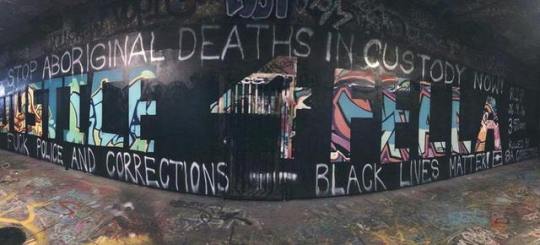
“Commemorating the passing of my brother Wayne Fella Morrison 1 year ago today. I love you and miss you every day. I hope it's not too long till I see your face again... Rest easy x
Until the chains of oppression break and fall. Until prisons are abolished. Until there are no more deaths in custody. Until we are safe. Until we are free. We won't stop fighting for justice and we shall overcome.
*thanks to the mob who came out tonight. ♥️”
Latoya Aroha Rule
#justiceforfella #blacklivesmatter #stopAboriginaldeathsincustody
#auspol#australia#justice4fella#blacklivesmatter#black lives matter#stopaboriginaldeathsincustody#stop death in custody#stop black deaths in custody#graff#graffiti#mural#street art#urban art#ftp#acab#1312#fuck the police#fuck the screws#screws#corrections#blm
24 notes
·
View notes
Link
After Wayne Fella Morrison’s death in detention in 2016, his sibling Latoya Aroha Rule organized rallies to call for justice for him and the hundreds of other Aboriginal people who have died in custody across Australia.
The circumstances of Morrison’s death drew national attention at the time: He was pinned down by correctional officers. His hands and feet were bound with restraints, a spit-hood was pulled over his head and he was placed face-down in the back of a prison van. When he was taken out, minutes later, he was blue and unresponsive.
About 500 people showed up for a march in Adelaide in October 2016 and 150 supporters turned out to events in Melbourne and Sydney.
But, earlier this month, tens of thousands of took the streets for Black Lives Matter protests in cities across Australia following the killing of George Floyd in the United States. Rule, who uses the pronoun “they,” has been blown away by the response. “Wayne’s name is up on banners in marches of tens of thousands of people. That’s not something I ever thought would be possible. It’s incredible,” they say.
Floyd’s death in Minneapolis, Minn. has sparked protests in solidarity on almost every continent. Some 9,000 miles away in Australia, it is focusing renewed attention on a longstanding problem: the deaths of Aboriginal people in custody.
“A lot of people were not aware of the amount of Aboriginal deaths in custody that were occurring,” says Cheryl Axleby, co-chair of the National Aboriginal & Torres Strait Islander Legal Services (NATSILS) and the CEO of the Aboriginal Legal Rights Movement in Adelaide.
She tells TIME: “I think it’s sort of ignited a passion in mainstream Australians who are saying, ‘This is not acceptable in our country, and why haven’t we done anything about it?'”
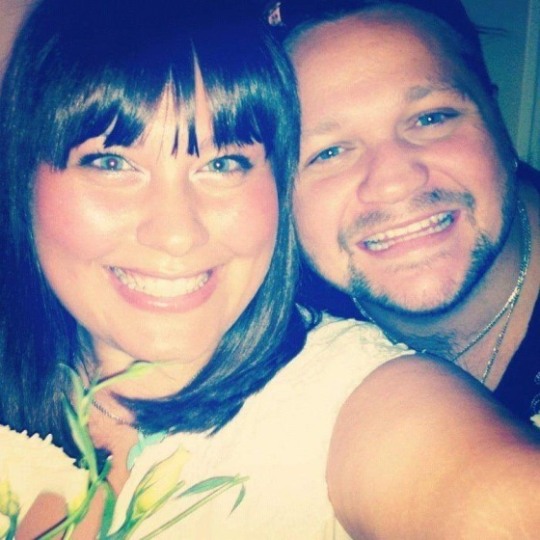
Photo courtesy of Latoya Aroha Rule Latoya Aroha Rule (L) and Wayne Fella Morrison (R)
‘Not getting the results we want’
Aboriginal Australians have faced a legacy of oppression. Mass killings and imported diseases wiped out the majority of the population within years of the British arrival in the late 18th century. Later, they were subject to officially-sanctioned killings and the forced removal of Aboriginal children from their families. Members of the so-called Stolen Generation were placed in church missions and other institutions in a bid to assimilate them into white society.
Writing in the Sydney Morning Herald on Monday, University of New South Wales professor (UNSW) Don Weatherburn said: “You can’t invade a country, drive the original inhabitants off their land, destroy their way of life, pass on your diseases, herd them into camps or on to islands, forcibly remove their children and expect this to have no long-term adverse effects.”
Today, Aboriginal people die about 8 years earlier and earn about 33% less than other Australians. They are more likely to struggle with mental health issues and to face domestic violence. There is also a high proportion of Aboriginal people in the prison system. In 2019, Indigenous Australians, who account for only about 2 to 3% of Australia’s population, made up 28% of the prison population.
June Oscar, the Aboriginal and Torres Strait Islander social justice commissioner at the Australian Human Rights Commission, tells TIME that over the last 10 years, there has been an 88% increase in the number of Aboriginal people incarcerated.
Such trends are reflected in the comparatively high number of deaths of Indigenous Australians in custody. At least 437 Aboriginal people died in custody from 2008 to 2020, according to Deaths Inside, a reporting project by Guardian Australia.
An official inquiry into previous deaths in custody made 339 recommendations to address the problem in 1991. A government-ordered review in 2018 found that 78% of the recommendations were fully or mostly implemented. However, many experts say meaningful changes haven’t been made. A group of academics called the report “misleadingly positive” in a letter published at the end of 2018.
Prime Minister Scott Morrison said on June 12 that reducing the incarceration rate is a complex and difficult task. Official statistics show that more than 60% of Aboriginal people in prison from 1990 to 2004 were there on violent crimes, and 65% of deaths were “self-inflicted.”
“It’s health policy, it’s youth policy, it’s a suicide policy, it’s employment policy, it’s welfare policy—this is an incredibly complicated area and not all Indigenous experiences are the same,” he said. “There is no shortage of funds being thrown at this issue, but clearly the application of funds by governments over decades and decades and decades is not getting the results we want.”
Still, not one person has yet been convicted in the death of an Aboriginal person in custody, although police officers involved in the recent deaths of two Aboriginal people have been charged with murder and are awaiting trial, and a coroner has referred the 2017 death of 55-year-old Tanya Day to prosecutors.
A ‘real potential for change’
Although the issue has been a talking point for Australians for years, the problem appears to be entering the public conversation in a way that it hasn’t in the past. Since the start of June, tens of thousands of people have marched across Australia, in Sydney and Melbourne and in smaller cities like Darwin, Perth and Adelaide.
Those marching have held signs reading “Black Lives Matter” and others with the names of those who have died in custody scrawled on them. One of the deaths highlighted is that of David Dungay Jr., who died in 2015 at the age of 26 after being held down by prison guards as he screamed “I can’t breathe” several times.
“To see 20,000 Australians to show up and rally in solidarity with David Dungay Jr. and George Floyd in the middle of a pandemic is astounding, and for the first time, I sense a real potential for change,” says George Newhouse, the lead lawyer at the National Justice Project, which is working with the Dungay family.
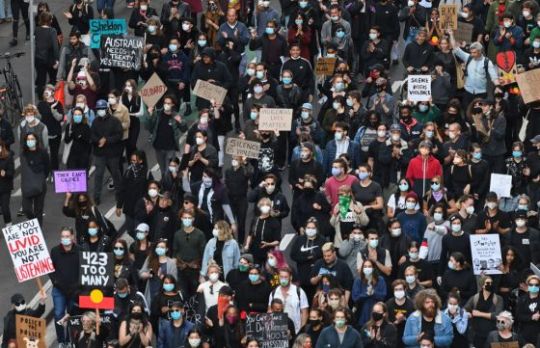
James D. Morgan—Getty Images Thousands of protestors marching in solidarity with “Black Lives Matter” down Castlereagh Street in the CBD in Sydney, Australia on June 06, 2020.
Local media reports that 25,000 Australians donated to a GoFundMe campaign set up for Indigenous rights in the first days June, contributing a combined $1 million.
“I’ve taken too long to open my eyes up on what’s happening in my own backyard,” commented someone who donated to a fundraiser for the Dungay family.
The Prime Minister has sparked criticism for his response to the protests. He said in early June that there was “no need to import things happening in other countries here to Australia,” and he has called for those who protested in violation of COVID-19 social distancing rules to face charges. He also drew widespread criticism when he said during a June 11 interview that Australia had no history of slavery, a claim he later walked back and apologized for.
But there are already some signs that the latest protests is sparking government action. Following protests in Sydney, a parliamentary inquiry into how deaths in custody are investigated in the state of New South Wales was launched.
“It is a really good thing now that Australia has sort of opened its eyes to what’s going on in its own country, but it’s heartbreaking, it takes up to tens of thousands of people protesting for them to acknowledge what we’re going through,” 28-year-old Apryl Day, the daughter of Tanya Day, tells TIME.
The elder Day died from head injuries after being taken off a train for public drunkenness and placed in a cell, where she fell and hit her head. An investigation into her death found that the train conductor’s decision to call the police was “influenced by her Aboriginality.” Prison officers failed to check on her every 30 minutes as per guidelines.
“She should be here today with her family, her grandkids. She deserved so much more than what she received,” Apryl Day says.

Photo courtesy of Charandev Singh Apryl Day (L) and her siblings in 2019
A major shift is needed
Some are cautious about what this moment might mean for Aboriginal rights. “There is a national reflex of denial and deflection of concerns about discrimination,” Tim Soutphommasane, a sociology and political theory professor at the University of Sydney, tells TIME. “Many Australians simply don’t see racism as a problem within our institutions.”
A study released this month by researchers at Australian National University found that three in four Australians have an implicit negative bias against Indigenous Australians.
Actor and writer Meyne Wyatt, whose recent television performance of a monologue about racism in Australia has gained national attention, tells TIME that he had his first encounter with law enforcement when he was just 11 years old. Police stopped him on his way to a skate park.
“We were stopped for no reason other than racial profiling,” Wyatt says. “From that point on, I knew the relationship that I had with police that would be a negative one.”
Meyne Wyatt closes #QandA with a monologue from his play, City of Gold. pic.twitter.com/9ALFIYRAnq
— QandA (@QandA) June 8, 2020
UNSW’s Weatherburn, who is also a former director of the New South Wales Bureau of Crime Statistics and Research, told TIME that police behavior towards Aboriginal people did need to improve, but a wider set of problems—unemployment, substance abuse, violence, poor school performance and child neglect— also needed to be addressed.
“Everybody is picking the low hanging fruit, the change to police procedure, and that’s important but it’s not going to address the elephant in the room,” he said.
While many of the demands of those fighting for Aboriginal peoples’ rights do call for changes to policing, like accountability for deaths in custody and independent investigations of police abuse allegations, many recognize the need for wider changes. Activists are calling for treatment options (rather than criminal penalties) for drug and alcohol abuse, and are demanding anti-racism programs in schools and workplaces as well as an end to what is seen as a systemic racism that leads to disproportionate incarceration rates. Many also say the age of criminal liability should be raised from 10 to 14 years old to stop Aboriginal children from ending up in jail, which can push them into a lifetime of cycling in and out of the prison system.
Activists say that they hope the Australians now paying renewed attention to their cause will help them to make their voices heard.
“We’ve seen great support from non-Aboriginal people asking what they can do, they’re donating to Aboriginal causes, they’re raising awareness,” says Axleby. “We’re hoping they will take these issues up with their own local politicians and those in power to say that change must occur.”
Some of those fighting for justice say the movement in the U.S. gives them reason for optimism.
Grieving for Morrison, Latoya Rule cites a call for Minneapolis to defund its police department and invest in community development as a major boost. “I got so much hope I cried. That looks like real structural, systemic change, and that’s a moment that I’d love to see here in Australia.”
If you or someone you know may be contemplating suicide, call the National Suicide Prevention Lifeline at 800-273-8255 or text HOME to 741741 to reach the Crisis Text Line. In emergencies, call 911 or seek care from a local hospital or mental-health provider.
0 notes
Photo

Mural commemorating Wayne Fella Morrison, Aboriginal man killed 1 year ago by prison guards.
0 notes
Text
Wayne Fella Morrison Obituary - Death : Wayne Fella Morrison Has Died
Wayne Fella Morrison Death - Obituary, Funeral, Cause Of Death
Our thoughts also are with the family and loved ones of Wayne Fella Morrison as the inquest into his death in custody resumes today.....click link to learn more
Wayne Fella Morrison Death – Obituary, Funeral, Cause Of Death
Our thoughts also are with the family and loved ones of Wayne Fella Morrison as the inquest into his death in custody resumes today.
Through a social media announcement, DeadDeath learned on April 27th, 2021, about the death of Wayne Fella Morrison who has died. In the mourning spirit of this death, families, friends, and associates…
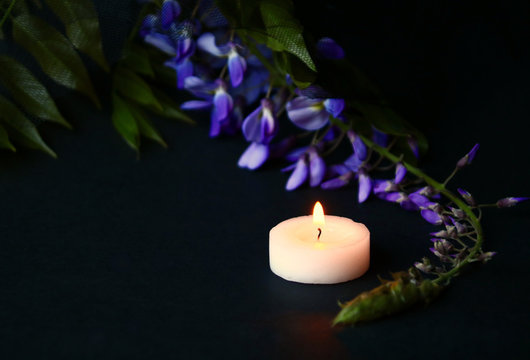
View On WordPress
0 notes
Text
Wayne Morrison Obituary - Death | Wayne Morrison Has Died
Wayne Fella Morrison Death - Dead, Obituary, Funeral, Cause Of Death, Passed Away: On April 27th, 2021, InsideEko Media learned about the death of Wayne Morrison through social media publication made on Twitter. Click to read and leave tributes.
Wayne Fella Morrison Death – Dead, Obituary, Funeral, Cause Of Death, Passed Away: On April 27th, 2021, InsideEko Media learned about the death of Wayne Morrison through social media publication made on Twitter.
InsideEko is yet to confirm Wayne Morrison’s case of death as no health issues, accident or other causes of death have been learned to be associated with the passing.
This death has…

View On WordPress
0 notes